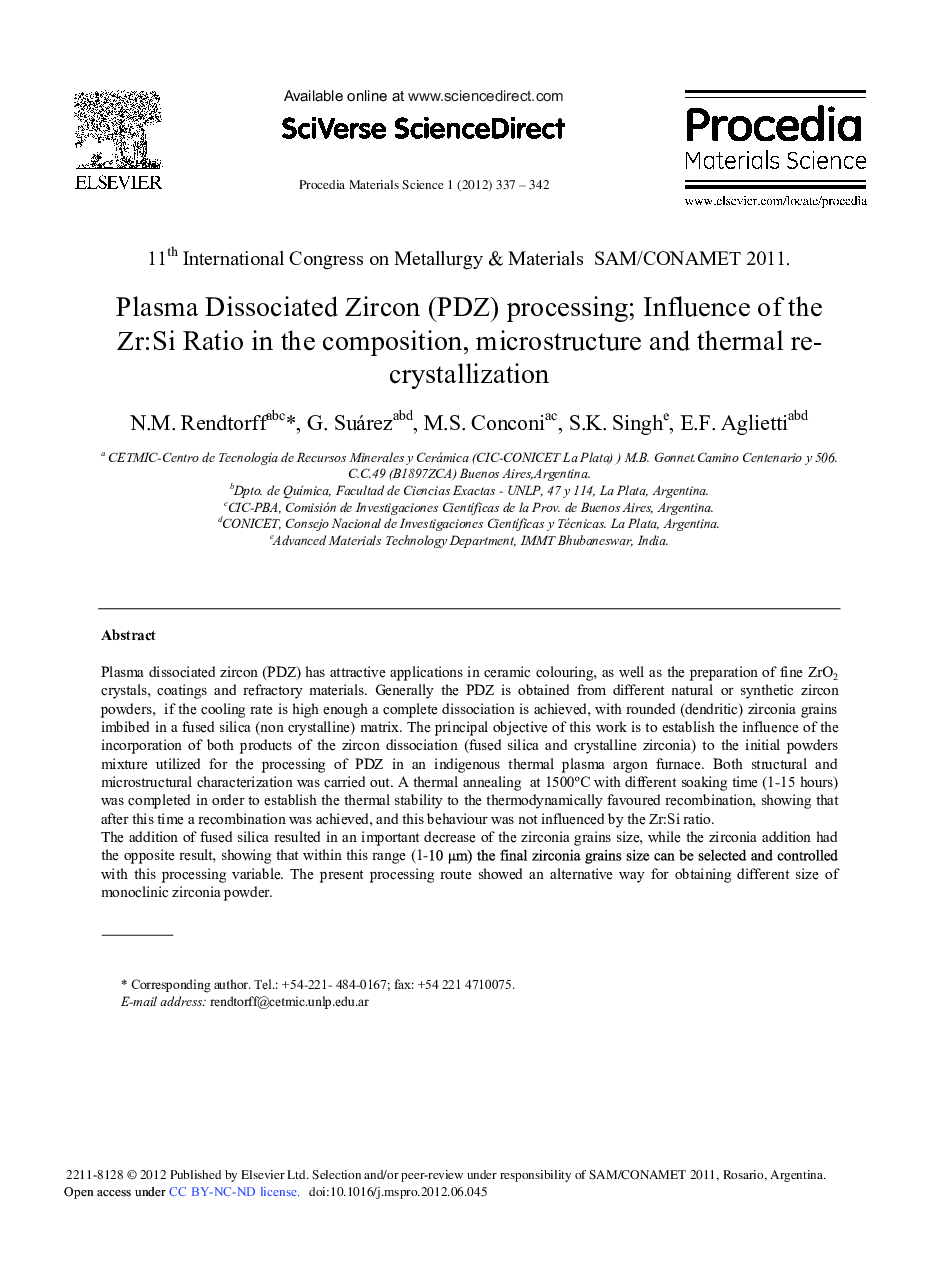| کد مقاله | کد نشریه | سال انتشار | مقاله انگلیسی | نسخه تمام متن |
|---|---|---|---|---|
| 1634892 | 1516784 | 2012 | 6 صفحه PDF | دانلود رایگان |

Plasma dissociated zircon (PDZ) has attractive applications in ceramic colouring, as well as the preparation of fine ZrO2 crystals, coatings and refractory materials. Generally the PDZ is obtained from different natural or synthetic zircon powders, if the cooling rate is high enough a complete dissociation is achieved, with rounded (dendritic) zirconia grains imbibed in a fused silica (non crystalline) matrix. The principal objective of this work is to establish the influence of the incorporation of both products of the zircon dissociation (fused silica and crystalline zirconia) to the initial powders mixture utilized for the processing of PDZ in an indigenous thermal plasma argon furnace. Both structural and microstructural characterization was carried out. A thermal annealing at 1500¼C with different soaking time (1-15 hours) was completed in order to establish the thermal stability to the thermodynamically favoured recombination, showing that after this time a recombination was achieved, and this behaviour was not influenced by the Zr:Si ratio. The addition of fused silica resulted in an important decrease of the zirconia grains size, while the zirconia addition had the opposite result, showing that within this range (1-10 μm) the final zirconia grains size can be selected and controlled with this processing variable. The present processing route showed an alternative way for obtaining different size of monoclinic zirconia powder.
Journal: Procedia Materials Science - Volume 1, 2012, Pages 337-342